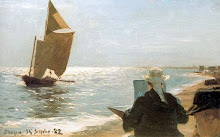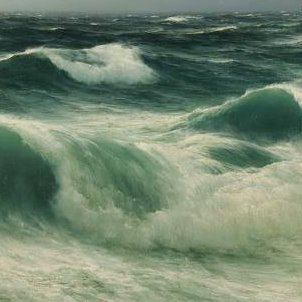
The Other End of the Beach, Acrylic
The subtle blending required for the smooth tonal gradation in the sand is easier to achieve in oils than in fast-drying acrylics, but mediums are availble to extend the drying time.
The subtle blending required for the smooth tonal gradation in the sand is easier to achieve in oils than in fast-drying acrylics, but mediums are availble to extend the drying time.


























































